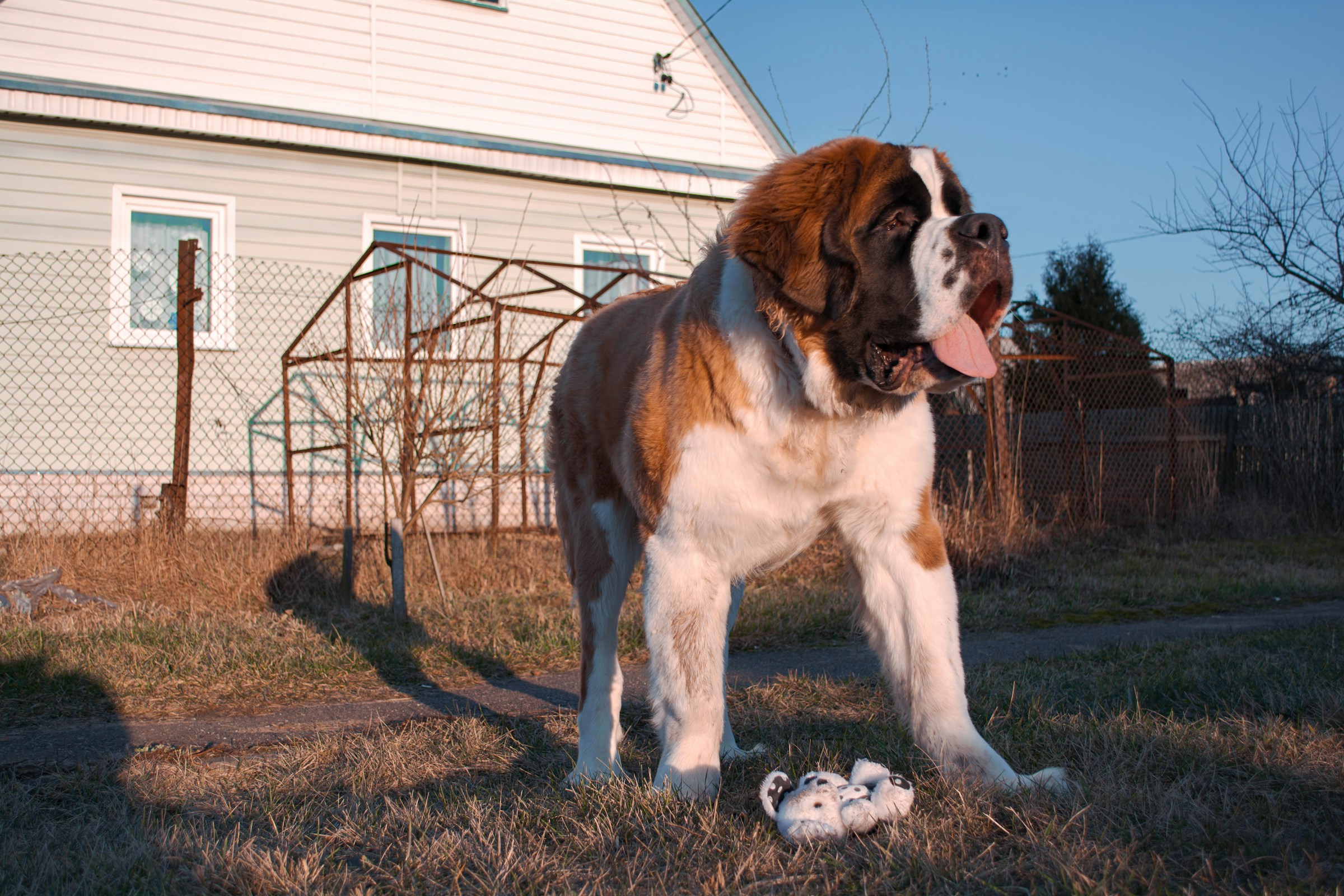Crate training an adult Saint Bernard can feel daunting, yet it’s essential for their safety and well-being. Understanding the unique needs of this gentle giant makes the journey smoother. This guide walks you through proven techniques, tailored strategies, and common challenges so you can transform the crate into a cozy den. Embrace the process, and create a space that your Saint Bernard will love and respect. Ready to foster a harmonious relationship with your pet? Let’s make crate training a positive experience together.
Understanding Crate Training
Crate training is a method used to teach dogs to accept a crate or kennel as a familiar and safe place. This training is based on crate training principles that emphasize the importance of creating a positive association with the crate. The primary purpose of crate training is to provide a secure environment for dogs, especially when they are left unsupervised.
A lire également : Unlocking the Potential: Are Doberman Pinschers Great Therapy Dogs? Essential Training Insights Revealed!
Benefits of Crate Training
The benefits of crate training extend beyond just safety. For adult dogs, crate training can aid in housebreaking, as dogs naturally avoid soiling their sleeping area. It also helps reduce separation anxiety by offering a comforting space when the owner is away. Additionally, a crate-trained dog is easier to transport, whether it’s a trip to the vet or a family vacation.
Crate Training Basics
When embarking on crate training, it’s crucial to follow certain basic principles. Start by introducing the crate in a non-threatening manner, allowing the dog to explore it voluntarily. Gradually increase the time the dog spends inside, always rewarding calm behavior with treats or praise. Consistency is key; maintaining a routine helps the dog understand that the crate is a positive element in their life. Remember, the crate should never be used as a form of punishment, as this can create negative associations and undermine the training process.
Cela peut vous intéresser : Unlocking the Potential: Are Doberman Pinschers Great Therapy Dogs? Essential Training Insights Revealed!
Preparing for Crate Training
Creating a positive environment for crate training begins with crate selection. It’s essential to choose a crate that suits the size of your dog. For larger breeds like a Saint Bernard, ensure the crate is spacious enough for the dog to stand, turn around, and lie down comfortably. A cramped crate can lead to discomfort and resistance, hampering the training process.
Dog Comfort
Once the appropriate crate size is selected, focus on enhancing dog comfort within the crate. Line the bottom with a soft blanket or a dog bed to provide a cozy resting area. Including a favourite toy or chew item can also make the crate a more inviting space. These elements help in creating a comforting environment, encouraging the dog to see the crate as a personal sanctuary.
Training Environment
Setting up a conducive training environment is crucial. Place the crate in a quiet, low-traffic area of your home where the dog can feel secure yet still be part of family activities. Avoid areas with excessive noise or disturbances that might cause anxiety. A stable environment complements the training process, helping the dog to associate the crate with safety and relaxation.
Step-by-Step Crate Training Process
When embarking on crate training, adopting effective crate training techniques is essential. This step-by-step guide will help you establish a successful routine.
Initial Introduction to the Crate
Begin by introducing the crate as a non-threatening space. Place it in a familiar area and encourage your dog to explore it voluntarily. Use treats or toys to lure them inside, ensuring the experience is positive. This initial phase is crucial in forming a welcoming association with the crate.
Establishing a Routine for Crate Training
Consistency is vital in crate training. Develop a training schedule that aligns with your dog’s daily activities. Start by incorporating short crate sessions into their routine, such as during mealtimes or rest periods. Consistent timing helps your dog anticipate and accept the crate as part of their day.
Gradually Increasing Crate Time
As your dog becomes more comfortable, gradually increase the duration they spend in the crate. Begin with short intervals and slowly extend these periods. Monitor their behaviour closely, ensuring they remain calm and relaxed. If signs of distress appear, reduce the time and progress more slowly. This gradual approach fosters a sense of security and trust in the crate environment.
Positive Reinforcement Strategies
Incorporating positive reinforcement into crate training is a powerful method to encourage desired behaviours in dogs. This approach focuses on rewarding positive actions, which helps in building a strong association between the crate and pleasant experiences.
Importance of Positive Reinforcement in Training
Positive reinforcement is crucial because it motivates dogs to repeat good behaviours. By rewarding your dog when they enter the crate calmly or stay quiet, you strengthen the likelihood of these behaviours recurring. This method fosters a trusting relationship between you and your pet, reducing anxiety and resistance.
Types of Rewards to Use During Crate Training
Choosing the right training rewards is essential for effective behaviour reinforcement. Common rewards include:
- Treats: Small, tasty snacks that your dog loves.
- Praise: Verbal affirmations like “good dog” or “well done.”
- Toys: Favourite playthings or chew items.
These rewards should be immediate and consistent to effectively reinforce desired behaviours.
Techniques for Reinforcing Desired Behaviors
To reinforce behaviours, consistently reward your dog each time they exhibit a positive action, like entering the crate on command. Gradually, as the dog becomes accustomed to the crate, you can reduce the frequency of rewards, maintaining only occasional reinforcement to ensure the behaviour is ingrained.
Common Challenges in Crate Training
Crate training can be a rewarding experience, but it is not without its challenges. Understanding and addressing crate training challenges is crucial for a successful outcome.
Identifying Signs of Anxiety in Adult Saint Bernards
Saint Bernards, known for their gentle nature, can still experience dog anxiety during crate training. Signs include excessive barking, whining, or attempts to escape the crate. Anxiety can manifest as panting or drooling, indicating discomfort. Recognizing these signs early is essential to address the underlying issues effectively.
Common Behavioral Issues During Crate Training
Behavioral issues such as resistance to enter the crate, destructive chewing, or soiling inside the crate can arise. These behaviors often stem from fear or a lack of familiarity with the crate environment. Understanding the root cause of these issues is the first step in addressing them.
Strategies to Overcome These Challenges
To tackle these challenges, employ gradual desensitization techniques. Introduce the crate slowly, allowing your dog to explore it at their own pace. Use positive reinforcement to reward calm behavior, helping to alleviate anxiety. Consistently offer treats or praise when your dog enters the crate willingly. Creating a routine and maintaining patience will foster a positive association with the crate, reducing anxiety and behavioral problems over time.
Troubleshooting Crate Training Issues
Crate training can sometimes present challenges, such as dog reluctance to enter the crate. This reluctance often stems from fear or unfamiliarity. To address this, ensure the crate is inviting by placing familiar items like a blanket or toy inside. Encourage your dog with treats or praise when they approach or enter the crate voluntarily. Patience is key; allow your dog to explore at their pace without pressure.
Excessive barking or whining can be another hurdle in crate training. These behaviours may indicate anxiety or a need for attention. To mitigate this, establish a consistent routine and ensure your dog has had adequate exercise before crate time. Use behavioral solutions like ignoring the barking until it ceases, then reward quiet behaviour with treats or affection. This reinforces the idea that calmness is rewarded.
Dealing with potty accidents in the crate requires understanding and patience. First, ensure the crate is the right size, as too much space can encourage accidents. Maintain a regular feeding and potty schedule to prevent mishaps. If accidents occur, clean the area thoroughly to remove any scent that might attract repeat behaviour. Consistency and positive reinforcement are essential in overcoming these issues.
Crate Training Success Stories
Delving into crate training experiences can offer valuable insights, especially when considering the unique needs of Saint Bernards. Many dog owners have shared their success stories, highlighting the transformative impact of crate training on their pets.
Case Studies of Successful Crate Training with Saint Bernards
One notable case involves a Saint Bernard named Max, who initially displayed reluctance towards the crate. Through consistent positive reinforcement and gradual acclimation, Max’s owner successfully turned the crate into a beloved retreat. This experience underscores the importance of patience and persistence in the crate training journey.
Key Takeaways from These Success Stories
These crate training experiences reveal common themes: the necessity of a calm, consistent approach and the power of positive reinforcement. Owners emphasize the significance of creating a safe, inviting environment that encourages voluntary crate entry. These elements are crucial for fostering a positive association with the crate.
Inspirational Quotes from Dog Owners
Dog owners often express their satisfaction with crate training through inspiring testimonials. One owner remarked, “Seeing my Saint Bernard happily retreat to his crate is a testament to the success of our training.” Such success stories serve as motivation for others embarking on their crate training journey.
Alternative Training Methods
When crate training isn’t the ideal fit for your dog, exploring alternative training methods can offer a solution. These methods cater to different dog temperaments and owner preferences, ensuring a positive training experience.
Overview of Alternative Methods to Crate Training
Behavioral training is a popular alternative that focuses on reinforcing good behaviour without the need for a crate. Techniques such as clicker training and reward-based systems can effectively teach dogs to behave appropriately within the home.
Pros and Cons of Different Training Techniques
Each dog training technique comes with its own set of advantages and drawbacks. For instance, clicker training is highly effective but requires consistency and time investment. On the other hand, reward-based systems are straightforward but may not address all behavioural issues. Understanding these pros and cons helps in selecting the most suitable method for your dog.
When to Consider Alternatives for Crate Training
Consider alternative training methods if your dog exhibits severe anxiety or resistance to crate training. Dogs with past trauma or specific behavioural concerns may benefit from a more tailored approach. Evaluating your dog’s unique needs and consulting with a professional can guide you in choosing the best training path.
Resources for Further Learning
For those eager to delve deeper into dog training resources, several options can enhance your understanding and skills. Crate training books offer in-depth insights and techniques. Titles like “The Art of Raising a Puppy” by the Monks of New Skete and “Don’t Shoot the Dog!” by Karen Pryor provide comprehensive guidance on crate training and general dog behaviour.
Recommended Books on Dog Training and Crate Training
Books are invaluable tools for learning. They present structured information and expert advice. Consider exploring “Crate Training Made Easy” for a focused approach. These resources can serve as a solid foundation for both novice and experienced dog owners.
Online Courses and Video Tutorials
In the digital age, online courses and video tutorials have become popular for learning at your own pace. Websites like Udemy and Coursera offer courses on dog behaviour and training. These platforms often include interactive elements, making learning engaging and practical.
Support Groups or Forums for Dog Owners
Engaging with support groups or forums provides a community-driven approach to learning. Platforms such as Reddit and Facebook host groups where dog owners share experiences and advice. These forums can be a source of encouragement and real-world tips, complementing more formal learning methods.
Maintenance of Crate Training
Ensuring the success of crate training requires ongoing effort and reinforcement techniques. Consistent reinforcement is crucial, as it helps maintain the positive behaviours your dog has learned. This involves rewarding your dog for entering and staying in the crate calmly, even after the initial training phase is complete. Maintaining training keeps the crate a comforting space, reinforcing its role as a safe haven.
Tips for Maintaining Crate Training Success
To maintain crate training success, integrate the crate into your dog’s daily routine. Regularly use the crate during mealtimes or as a resting spot. This consistency helps your dog continue associating the crate with positive experiences. If your dog shows signs of reluctance, revisit reinforcement techniques like offering treats or praise to encourage voluntary use of the crate.
Adapting Crate Training as the Dog Matures
As your dog matures, their needs may change, requiring adaptations in your ongoing training approach. Adjust the crate environment to suit their size or preferences, ensuring it remains inviting. Older dogs might need less frequent reinforcement but still benefit from occasional rewards to sustain positive behaviour. Understanding and adapting to these changes ensures the crate remains a beneficial part of your dog’s life.











